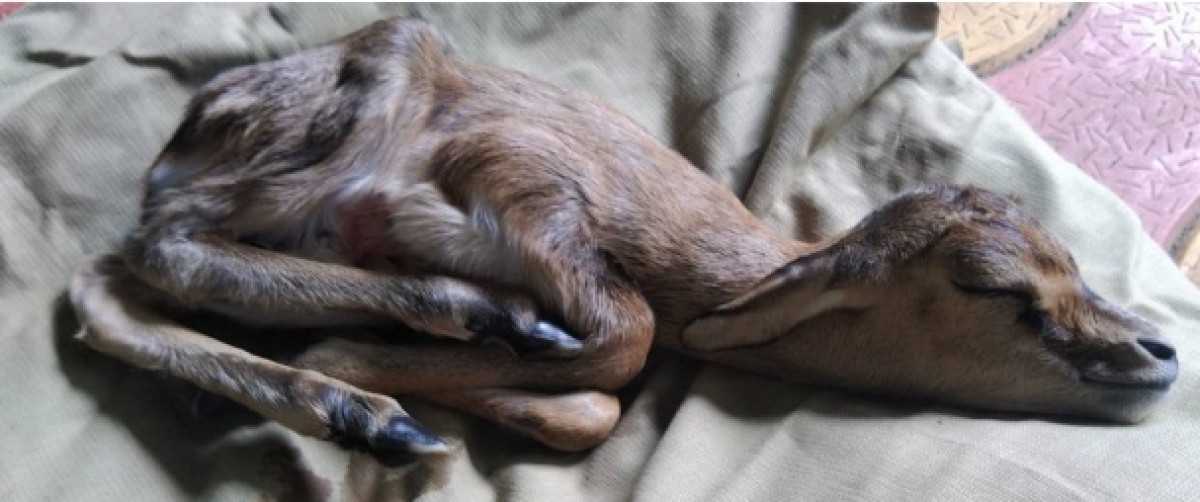India
Abandoned Chinkara fawns could be re-wilded within 12 hours of rescue instead of human parenting
Overenthusiasm in rescuing Chinkara fawns out of ignorance is one of the growing threats to species, experts state.

A paper by Pune-based Dr Satish Pande and other experts shows that rescued fawns of Indian Gazelle or Chinkara could be re-wilded within 12 hours instead of parenting them by humans. Pande is the Medical Director at the Ela Transit Treatment Centre (ETTC) in Pingori in Maharashtra’s Pune district.
Chinkaras are protected by the Wildlife Protection Act, and are listed under Schedule 1. These antelopes are facing various threats including habitat loss, human encroachment, snare traps, wire trapping, predation by stray dogs, etc. Another threat is overenthusiasm in rescuing Chinkara fawns out of ignorance," states Pande in a statement regarding the paper ‘Re-Wilding of Rescued Chinkara Gazella bennettii Fawns in Western Maharashtra, India’. The paper has been authored by Pande and Rahil Lonkar, Rajkumar Pawar, Omkar Sumant and Reuven Yosef, along with support from Golande (forester), V Jagtap (RFO), Asha Bhong (ACF), Vivek Khandekar (APCCF) and Nitin Kakodkar (PCCF and CWLW) from the Maharashtra Forest Department. The paper has been published in the current issue EC Veterinary Science, an international peer-reviewed open access journal.
Rescued Chinkara fawns are known to often feign limping or inability to stand or walk in presence of human beings. “It is their innate survival strategy, not a learnt or taught one. It is also seen in other ungulates,” Pande said.
During the foaling season of 2020, ETTC of Ela Foundation, Pune and Maharashtra Forest Department rescued, examined, treated and re-wilded three Chinkara fawns by giving them back to their rightful parents. All three incidents were successful, and the fawns could be offered freedom. In all three incidents, the fawns seemed to be unable to stand up on their own or limping, without any physical damage on examination. However, when isolated or placed back at the spot of rescue, they were seen standing up or walking perfectly fine, which could mean that they most likely feigned limping initially in human presence.
“This can lead to a mistaken conclusion upon the part of the laymen that they are either paralysed or have weak legs. The fawns are often erroneously ‘rescued’ for this reason and are thereby inadvertently deprived of natural parental care. However, camera trap images reveal that they are able to walk normally in the absence of human observers,” the report states, adding, this method can be a simple conservation solution for future fawns collected in the wild and brought to rehabilitation centres.
“We rescue at least a few dozen Chinkaras and their fawns in Pune district in a season. And they have only one fawn at a time. So a loss means 100 percent mortality. Hence, it is very important that the public, as well as experts in the area, are educated in the right methods of rescue,” Pande said.





